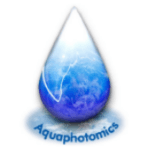Most fresh foods contain more than 70% water, while fresh fruits and vegetables can contain up to 95% water. Thus water status of foods is deeply related to their quality. Near infrared spectroscopy (NIRS), based on the 780 – 2,500 nm wavelength region of the electromagnetic spectrum has been developed as a nondestructive tool for food quality monitoring. It has been observed that in many foods the NIR signal is dominated by the absorbance of water and multivariate analysis of NIRS frequently demonstrates that the water absorbance band, located around 1450 nm, is the main contributor to quality prediction (Tsenkova 2009). This confirms that water status is a key indicator of food quality.
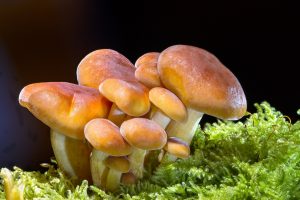
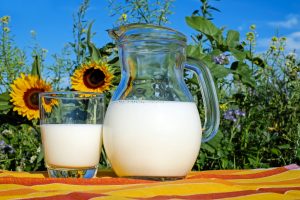
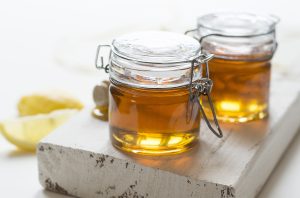
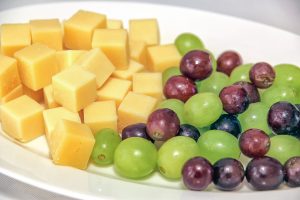
As a major part of the food, water and its absorbance pattern provide a holistic marker for monitoring the food quality in a completely non-destructive manner as well as for measurements of various food properties and components (Atanassova et al. 2009, Bázár et al. 2016, Cattaneo et al. 2009, Esquerre et al. 2009, Iwamoto, Uozumi, and Nishinari 1987, Atanassova 2015, Gowen 2012, Cattaneo et al. 2016, Barzaghi, Cremonesi, and Cattaneo 2017, Tsenkova et al. 1999). The same concept developed for water quality monitoring(Kovacs et al. 2016) is equally applicable in this field.
Atanassova, S. 2015. “Near Infrared Spectroscopy and aquaphotomics for monitoring changes during yellow cheese ripening.” Agricultural Science and Technology 7 (2):269-272.
Indeed, the concept of water activity is intimately related to NIRS: as the amount of free water in a system is increased, spectral features around 1400 nm increase in intensity (Gowen et al. 2009). Aquaphotomics has been applied to understanding the role of water in food quality, for instance in the detection of surface damage in mushrooms (Gowen et al. 2009), quality monitoring of milk (Atanassova et al. 2009, Tsenkova, Atanassova, Kawano, et al. 2001, Tsenkova, Atanassova, Ozaki, et al. 2001, Tsenkova, Atanassova, and Toyoda 2001, Tsenkova et al. 1994, Tsenkova et al. 1999), detection of honey adulteration(Bázár et al. 2016) , monitoring of the cheese ripening (Atanassova 2015), influence of packaging materials on cheese and winter melon (Cattaneo et al. 2016) and many more (Gowen 2012).
Atanassova, S., R. Tsenkova, R.M. Vasu, M. Koleva, and M. Dimitrov. 2009. “Identification of mastitis pathogens in raw milk by near infrared spectroscopy and SIMCA classification method.” Scientific Works of the University of Food Technologies-Plovdiv 56 (1):567-572.
Barzaghi, Stefania, Katia Cremonesi, and Tiziana Maria Piera Cattaneo. 2017. “Influence of the presence of bioactive compounds in smart-packaging materials on water absorption using NIR spectroscopy and aquaphotomics.” NIR news 28 (2):21-24.
Bázár, G., R. Romvári, A. Szabó, T. Somogyi, V. Éles, and R. Tsenkova. 2016. “NIR detection of honey adulteration reveals differences in water spectral pattern.” Food Chemistry 194 (Supplement C):873-880. doi: https://doi.org/10.1016/j.foodchem.2015.08.092.
Cattaneo, T. M.P. , G. Cabassi, M. Profaizer, and R. Giangiacomo. 2009. “Contribution of Light Scattering to near Infrared Absorption in Milk.” Journal of Near Infrared Spectroscopy 17 (6):337-343. doi: 10.1255/jnirs.867.
Cattaneo, Tiziana MP, Maristella Vanoli, Maurizio Grassi, Anna Rizzolo, and Stefania Barzaghi. 2016. “The aquaphotomics approach as a tool for studying the influence of food coating materials on cheese and winter melon samples.” Journal of Near Infrared Spectroscopy 24 (4):381-390.
Esquerre, C. , A. Gowen, R. Tsenkova, C. O’Donnell, and G Downey. 2009. “Identification of water matrix coefficients in mushrooms (Agaricus bisporus) using robust ensemble of Monte Carlo uninformative variable elimination.” 14th International Conference on Near Infrared Spectroscopy, Bangkok, Thailand.
Gowen, A. , R. Tsenkova, C. Esquerre, G. Downey, and C. O’Donnell. 2009. “Use of near infrared hyperspectral imaging to identify water matrix coordinates in mushrooms (Agaricus Bisporus) subjected to mechanical vibration.” Journal of Near Infrared Spectroscopy 17 (6):363-371. doi: 10.1255/jnirs.860.
Gowen, AA. 2012. “Water and food quality.” Contemporary Materials 1 (3):31-37.
Iwamoto, M., J. Uozumi, and K. Nishinari. 1987. “Preliminary investigation of the state of water in foods by near infrared spectroscopy.” Proceedings of the International NIR/NIT Conference, Budapest, Hungary.
Kovacs, Z., G. Bázár, M. Oshima, S. Shigeoka, M. Tanaka, A. Furukawa, A. Nagai, M. Osawa, Y. Itakura, and R. Tsenkova. 2016. “Water spectral pattern as holistic marker for water quality monitoring.” Talanta 147:598-608.
Tsenkova, R, S Atanassova, K Toyoda, Y Ozaki, K Itoh, and T Fearn. 1999. “Near-infrared spectroscopy for dairy management: measurement of unhomogenized milk composition.” Journal of Dairy Science 82 (11):2344-2351.
Tsenkova, R. 2009. “Aquaphotomics: dynamic spectroscopy of aqueous and biological systems describes peculiarities of water.” Journal of Near Infrared Spectroscopy 17 (6):303-313. doi: 10.1255/jnirs.869.
Tsenkova, R., S. Atanassova, S. Kawano, and K. Toyoda. 2001. “Somatic cell count determination in cow’s milk by near-infrared spectroscopy: a new diagnostic tool.” Journal of animal science 79 (10):2550-2557.
Tsenkova, R., S. Atanassova, Y. Ozaki, K. Toyoda, and K. Itoh. 2001. “Near-infrared spectroscopy for biomonitoring: influence of somatic cell count on cow’s milk composition analysis.” International Dairy Journal 11 (10):779-783.
Tsenkova, R., S. Atanassova, and K. Toyoda. 2001. “Near infrared spectroscopy for diagnosis: Influence of mammary gland inflammation on cow´ s milk composition measurement.” Near Infrared Analysis 2 (1):59-66.
Tsenkova, RN, KI Yordanov, K Itoh, Y Shinde, and J Nishibu. 1994. “Near-infrared spectroscopy of individual cow milk as a means for automated monitoring of udder health and milk quality.” Annual meeting (USA).
